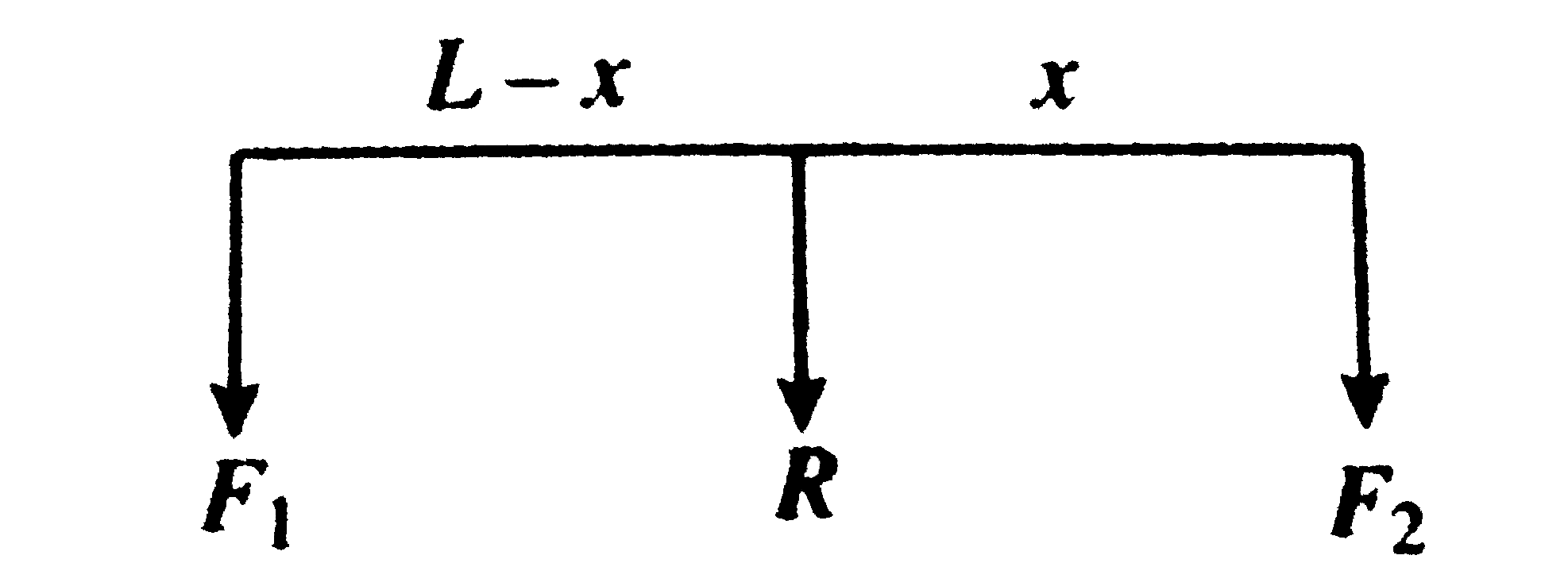The line of action of the resultant of two like parallel forces shifts by one-fourth of the distance between the forces when the two forces are interchanged. The ratio of the two forces is:
A
1:2
B
2:3
C
3:4
D
3:5
Video Solution
Text Solution
The correct Answer is:D
For τ=0
F1(L−x)=F2x

F2(3L4−x)=F1(x+L4)L−xx+(L4)=x(3L4)−x
3L4=x+3x4+x4=2ξmplies3L=8x
So putting the value of x
F15L8=F23L8⇒F1:F2=3:5
|
Updated on:21/07/2023
Topper's Solved these Questions
- BOOK - CENGAGE PHYSICSCHAPTER - RIGID BODY DYNAMICS 1EXERCISE - Multiple Correct9videos
RIGID BODY DYNAMICS 1
- BOOK - CENGAGE PHYSICSCHAPTER - RIGID BODY DYNAMICS 1EXERCISE - Linked Comprehension28videos
RIGID BODY DYNAMICS 1
- BOOK - CENGAGE PHYSICSCHAPTER - RIGID BODY DYNAMICS 1EXERCISE - Subjective13videos
RIGID BODY DYNAMICS 1
- BOOK - CENGAGE PHYSICSCHAPTER - PROPERTIES OF SOLIDS AND FLUIDSEXERCISE - INTEGER_TYPE2videos
PROPERTIES OF SOLIDS AND FLUIDS
- BOOK - CENGAGE PHYSICSCHAPTER - RIGID BODY DYNAMICS 2EXERCISE - Interger2videos
RIGID BODY DYNAMICS 2
Similar Questions
Knowledge Check
- Question 1 - Select One
The line of action of the resultant of two like parallel forces shifts by one-third of the distance between the forces when the two forces are interchanged. The ratio of the two forces is
A1:2B2:3C3:4D3:5 - Question 2 - Select One
Theresultant of two like parallel forces is 12 N. The distance between the forces is 18 metres. If one force is of 4 N, then the distance of the resultant from the smaller force is
A4 mB8 mC12 mDNone of these - Question 3 - Select One
The resultant of two like parallel forces 5 N and 10 N is _______ N.
A10B5C15D50
The square of resultant of two equal forces is three times their product. Angle between the force is
View SolutionIf the line of action of the resultant of two forces P and Q divides the angle between them in the ratio 1:2 then the magnitude of the resultant is
View SolutionThe square of resultant of two equal forces is equal to three times their product. Angle between the forces in radian is
View SolutionIf two like parallel forces of PQN and QPN have a resultant 2N, then :
View SolutionIf two like parallel forces of PQN and QPN have a resultant 2N, then :
View Solution

